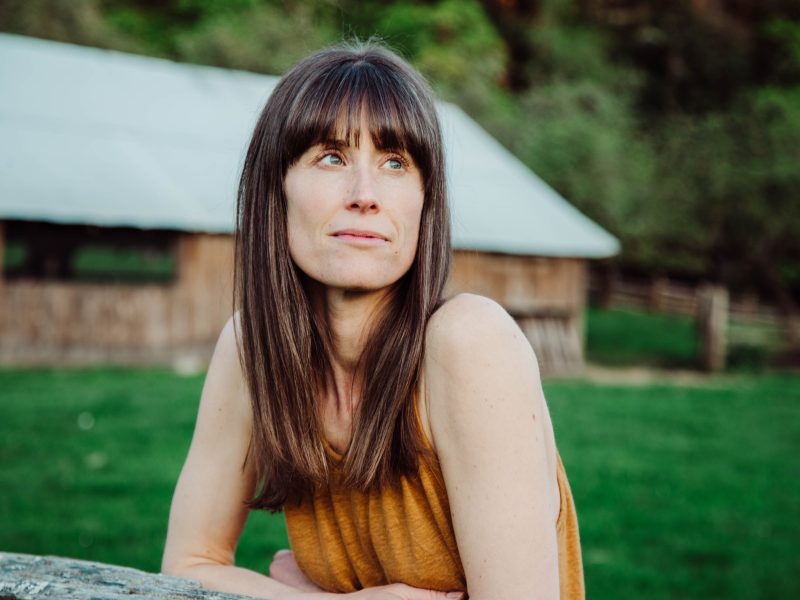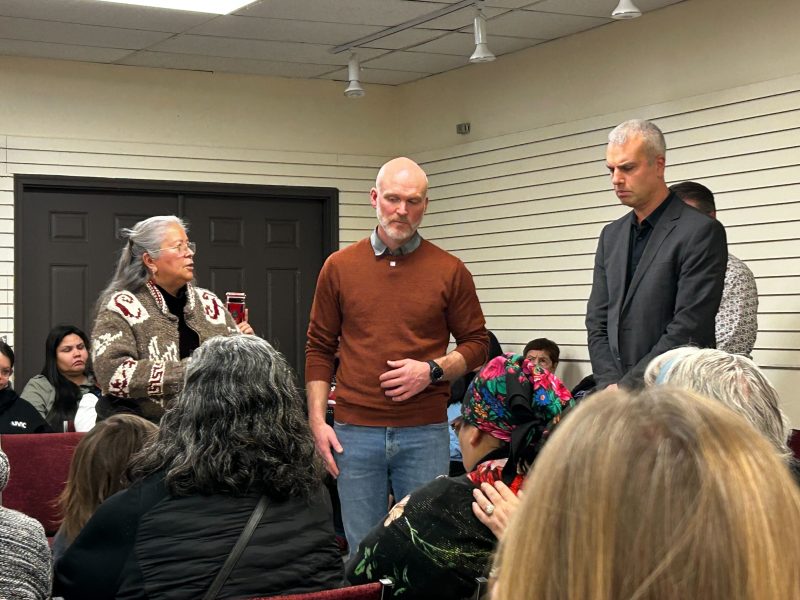
A gathering at Q’shintul/Mill Bay Nature School brought Elders, community members, parents, staff and children together under the heat of the summer sun to hold ceremony and celebrate the launch of a new project called “10,000 Gifts: Witnessing Q’shintul.”
The project’s goal is to collect 10,000 gifts — each no bigger than the palm of your hand and with a hole in it — from anyone who has a connection with the school. The gifts will be strung up with accompanying notes from the people who offered them.
Q’shintul/Mill Bay Nature School has been part of the Cowichan Valley School District for about four years but its model — which centres children and their curiosity — has been recognized in and outside of Canada. The school focuses on land-based learning and incorporates Indigenous teachings through the meaningful inclusion of Elders and Knowledge Holders in its programming.
A film, being produced by visual artist and filmmaker duo Arianna Augustine and Matt Gladman, will share the journey of this project and will also tell a story about what the school is doing differently when it comes to education.
Read also: Small school, big impact: A story of 10,000 Gifts
The number 10,000 represents the 10,000-year history of Hul’q’umi’num Peoples on the lands. It also represents lives lost to residential “schools” and the impact Q’shintul/Mill Bay Nature School can have on the world.

On the day of the project launch, a circle of chairs was set up in the field behind the school. In the middle were two posts with a string hung between them. Various objects dangled from the string and, periodically, someone would come to add theirs to the collection.
Some children ran and played while others helped adults cut string to hang the objects with, as well as tags to number them. Those who brought gifts to be hung were also handed cards to fill out with questions about the person’s relationship to the school, the significance of the object they’re gifting and what 10,000 means to them.
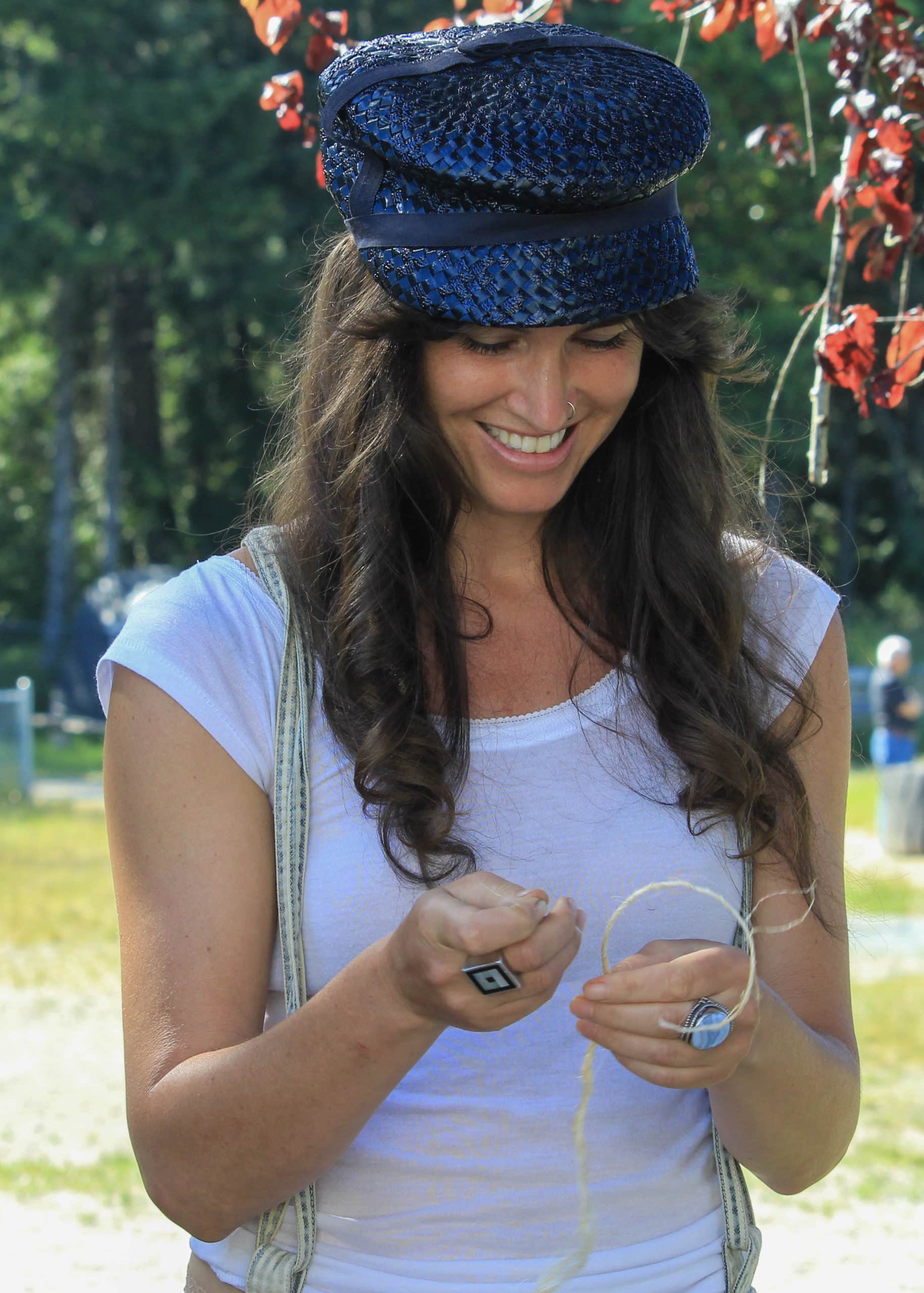
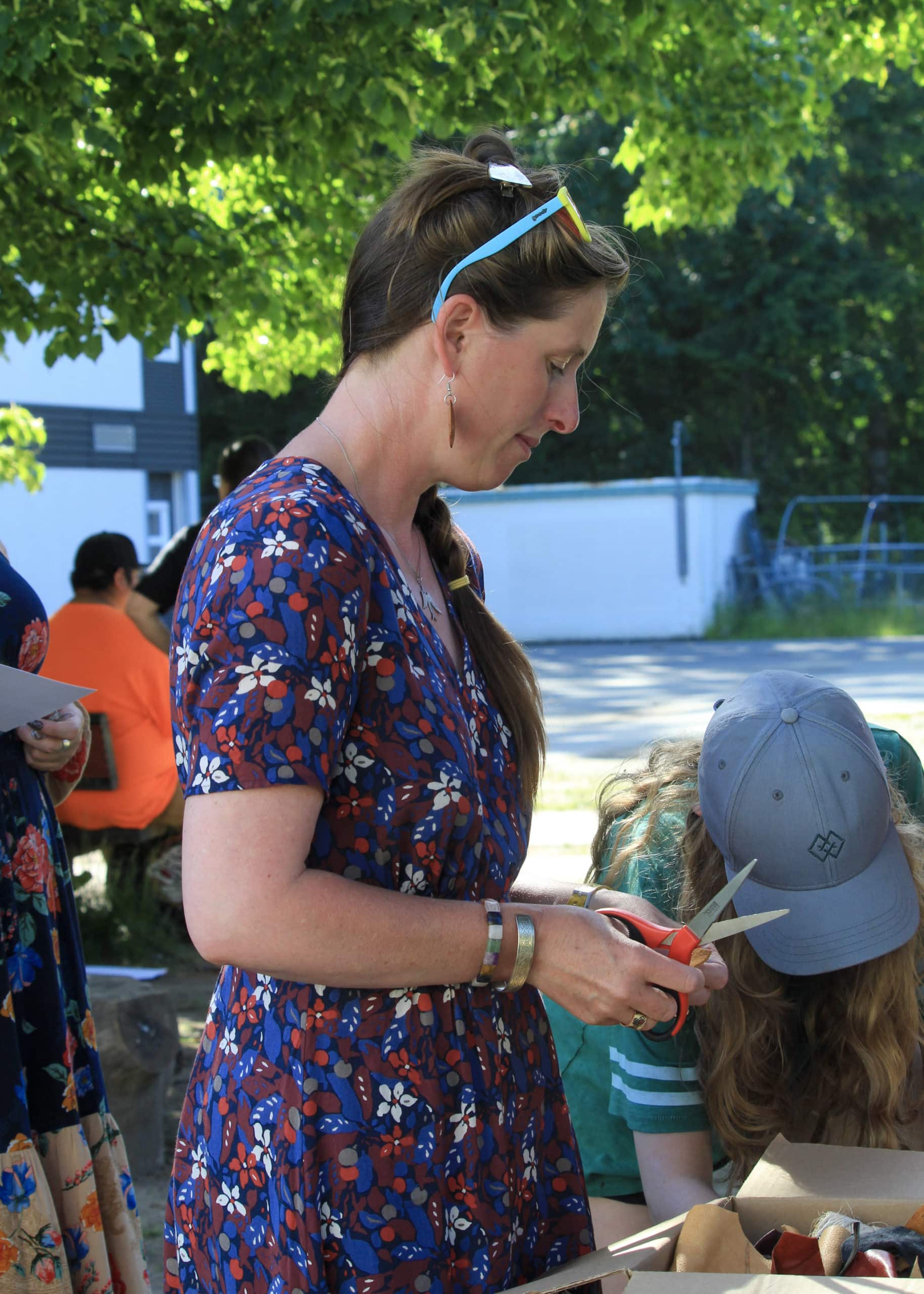
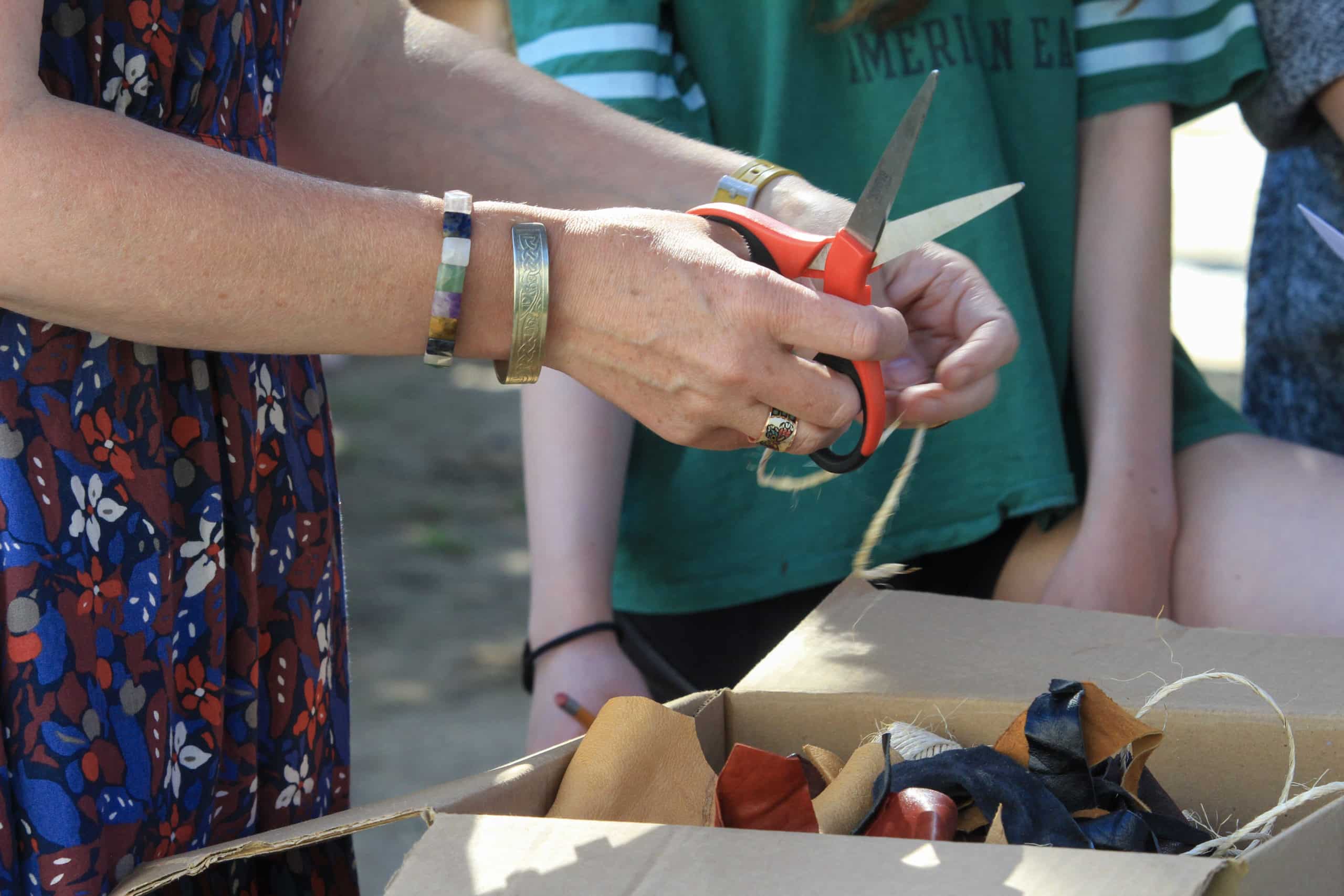
Carlie Voisin (top left) and Jemimah Monro prepare string and tags for the gifts to be hung with before the ceremony. <b> Photos by Shalu Mehta/The Discourse </b>
Jemima Monro has three children who attend the school — each a different age. She says she chose to send her sons to the school after noticing one of them struggling in a traditional classroom. She smiles and says her son just needed to be able to run around outside.
“The kids, they pump each other up at this school,” Monro says as she cuts string for the project. “It’s a community.”
Not far from Monro is Carlie Voisin, who is also helping to cut string and tags. She steps away from her station for a moment, looking towards the circle of chairs in the field.
Voisin’s daughter, Vienna Wright, will be presenting a painting of hers during the ceremony later. She talks about how much her daughter has benefitted from being in this learning environment.
“I get emotional when I think about this school,” Voisin says.


Before the ceremony begins, the string of objects in the middle of the circle is taken down and gently folded inside a blanket. Delilah Hackey, a student at Q’shintul/Mill Bay Nature School, is then given the blanket to carry during the start of the ceremony.
Students at the school are given the opportunity to give a land acknowledgement if they feel called to do so, and it is Delilah’s acknowledgement — which emphasizes that Hul’q’umi’num People have been on the lands for 10,000 years — that served as inspiration for this project.
She and other community members follow Elder-in-Residence Tousilum’s lead as he enters the circle. The string of objects is then hung again as Tousilum calls children up to join him in drumming and song. The ceremony has begun.
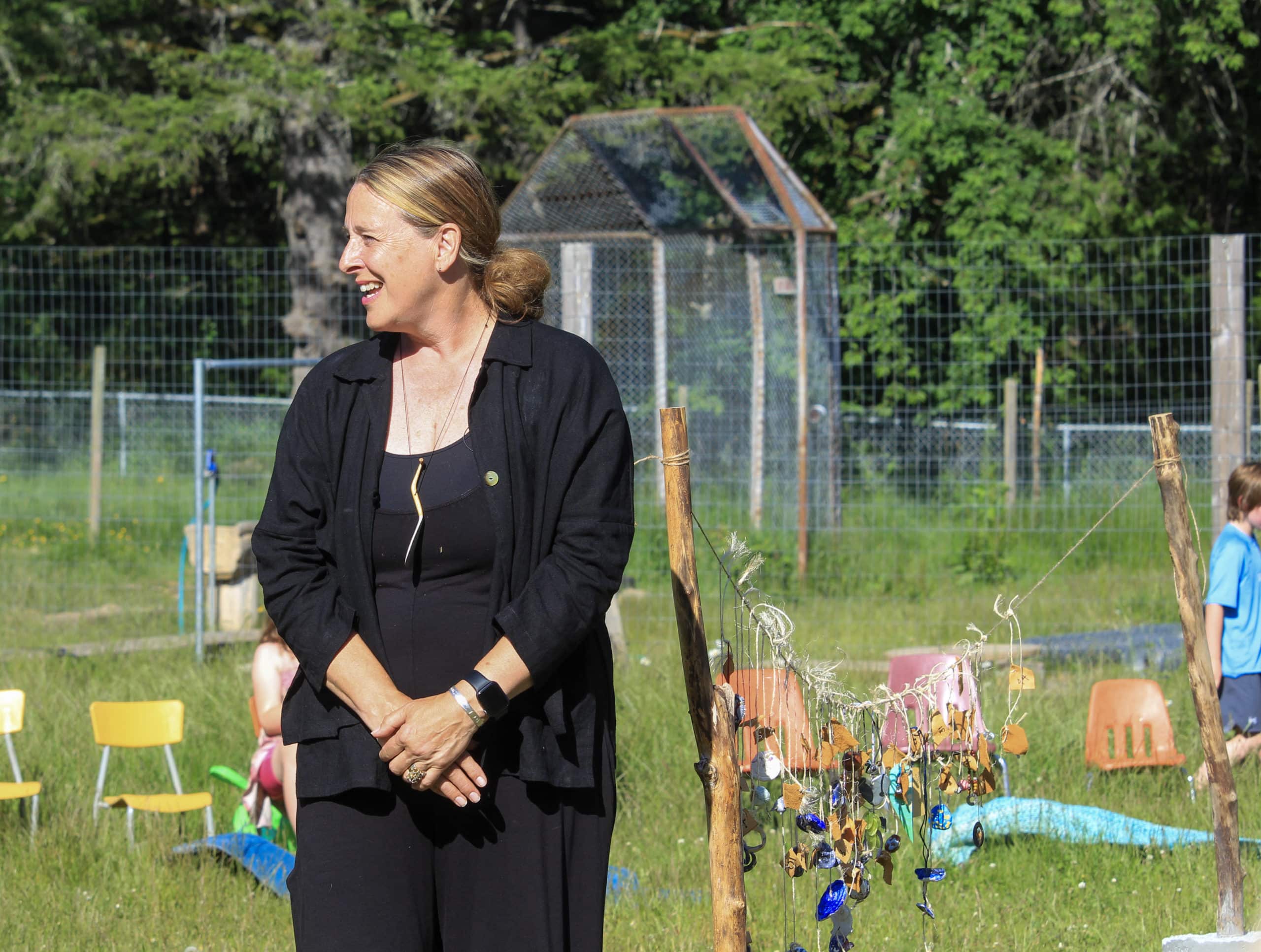
Q’shintul/Mill Bay Nature School head learner (which other schools may call a “principal”) Kim Ondrik makes her way to the centre of the circle after the song finishes.
She speaks about the intention of the 10,000 Gifts project — to honour stories of the land and lives lost at residential “schools,” as well as to help visualize just how large the number 10,000 really is.
Ondrik reminisces about the humble beginnings of Q’shintul/Mill Bay Nature School, describing the once-derelict building with “grass up to [their] armpits.” She then shares future hopes for the school — that it can impact 10,000 people.
“The learning the children do here will change the world,” Ondrik says.
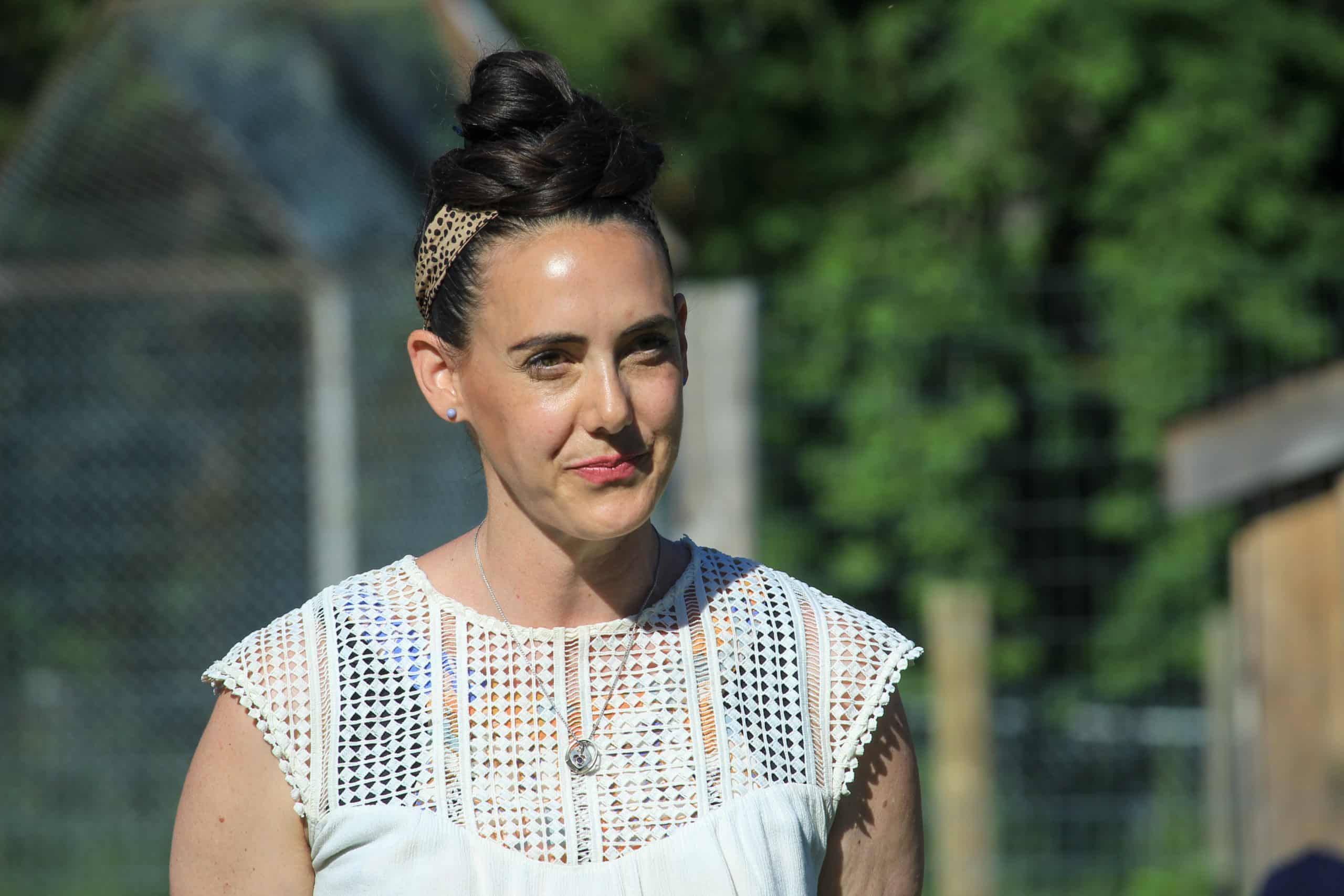
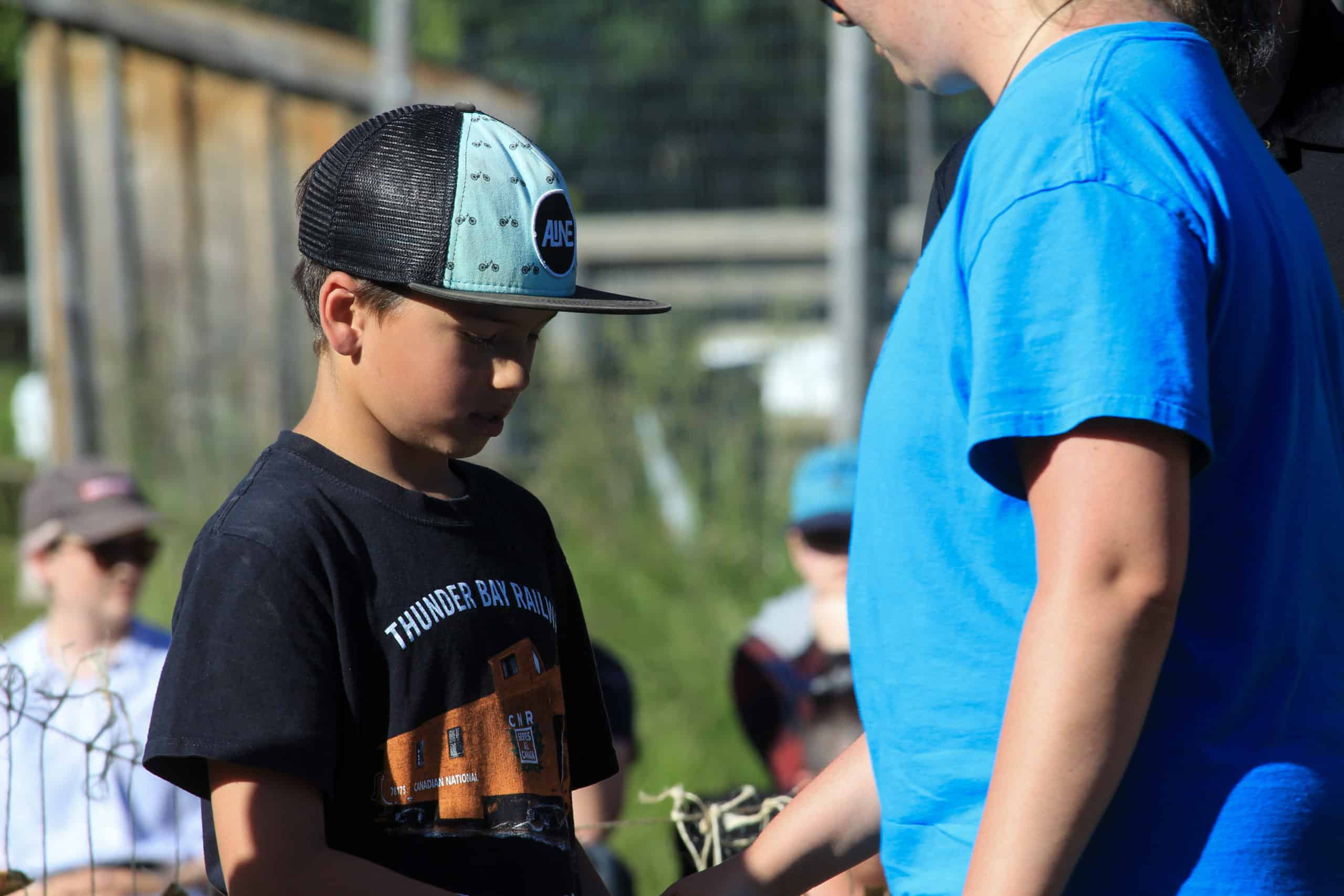
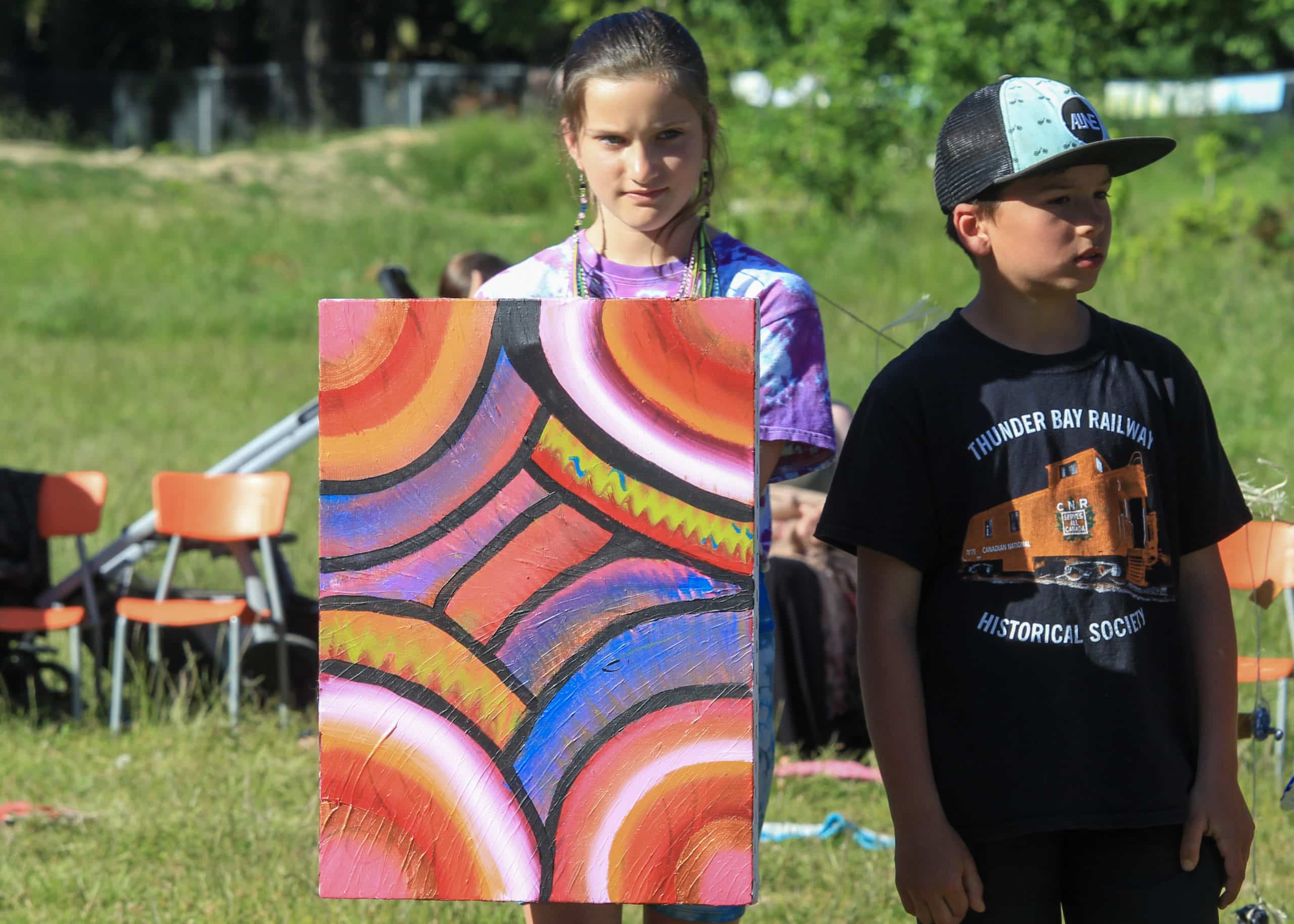

Tousilum then calls witnesses to the centre of the circle. He says this is a practice that has been done by Hul’q’umi’num Peoples for thousands of years to help preserve oral histories.
Three students — Vienna Wright, Simon Gleeson and Abby Simmons — join Tousilum in the circle. Tammera Merkins, a parent at the school, as well as parent and educator Brian Simmons make their way to the centre as witnesses, too.
Each witness takes turns speaking a few words about the significance of the project and school. After each speech, a lineup of staff from the school greet the witness, subtly handing them 50 cents. This practice is a way to say thank you for being there and bearing witness, Tousilum explains.
“This project is the first step in some people’s journey,” Abbey Simmons says. “I want people to realize what Indigenous people have gone through.”
Brian Simmons, father to Abbey and a teacher at the school says this project has offered an opportunity for the community to take 10,000 steps towards reconciliation.
“This is a gift that can make it easier for those of us who struggle with words to express what this means,” Brian says. “For our kids, that’s really where the power of the project is … Emotions, words and feelings are hard to express but [with this] we can sink our beliefs and raw emotion into a gift in place of that. This is more than just an item. I see 10,000 words and 10,000 steps towards a better future, towards reconciliation.”


Tousilum then opened up the centre of the circle to anyone else who felt called to speak.
Cammy, a parent at the school, took to the centre to speak and offer thanks to the Elders, Knowledge Holders and school for the learnings that have been passed on to the children.
“I grew up here and I feel foreign here. I do not know how to interact with Hul’q’umi’num People in a way that honours them,” she says. “We would like to take that step … we’re trying. Thank you for teaching our children differently. Thank you for passing the torch in a very different way.”
Brian Simmons and his child, Sammy Simmons, entered the circle next carrying quilts. The quilts were passed along to them from Sammy’s grandmother, who made them as gifts for Elders-in-Residence Tousilum and Sulsa’meethl.

The ceremony concluded with an invitation to Q’shintul/Mill Bay Nature School students to join in song and drumming.
Students rushed to one end of the circle and began to sing a song that seemed familiar to them.
“Huy ch q’ u, Huy ch q’ u, Huy ch q’ u siem,” their voices rang out as they lifted their hands up to close the ceremony and celebration. [end]

